Matching skills Geometry Worksheets for Ages 3-8
9 filtered results
-
From - To
Discover our engaging "Matching Skills Geometry Worksheets for Ages 3-8," designed to cultivate early geometry aptitude in young learners. These interactive worksheets are perfect for developing critical thinking and spatial awareness while making learning fun and enjoyable. Kids will master fundamental geometric concepts as they match shapes, patterns, and colors in a variety of playful exercises. Suitable for preschool and elementary students, our expertly crafted materials support essential math skills that form a solid foundation for future success. Join Kids Academy today and watch your child's confidence and interest in geometry grow with every completed worksheet.
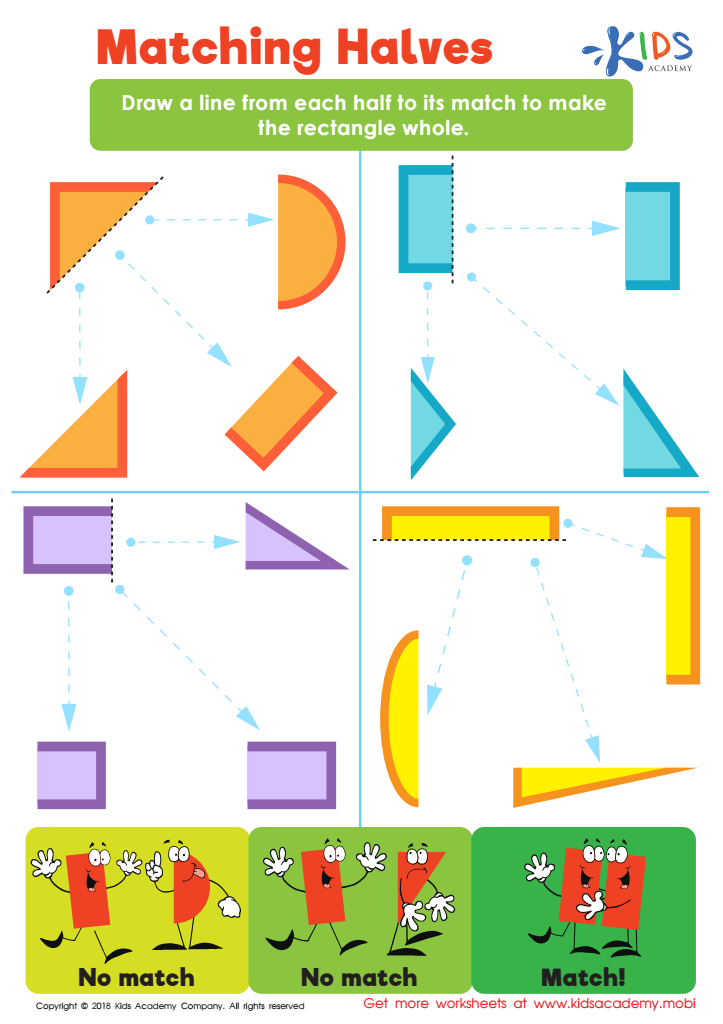

Matching Halves Worksheet


Fruits Match Up Worksheet


Animal Shadows Sorting Worksheet
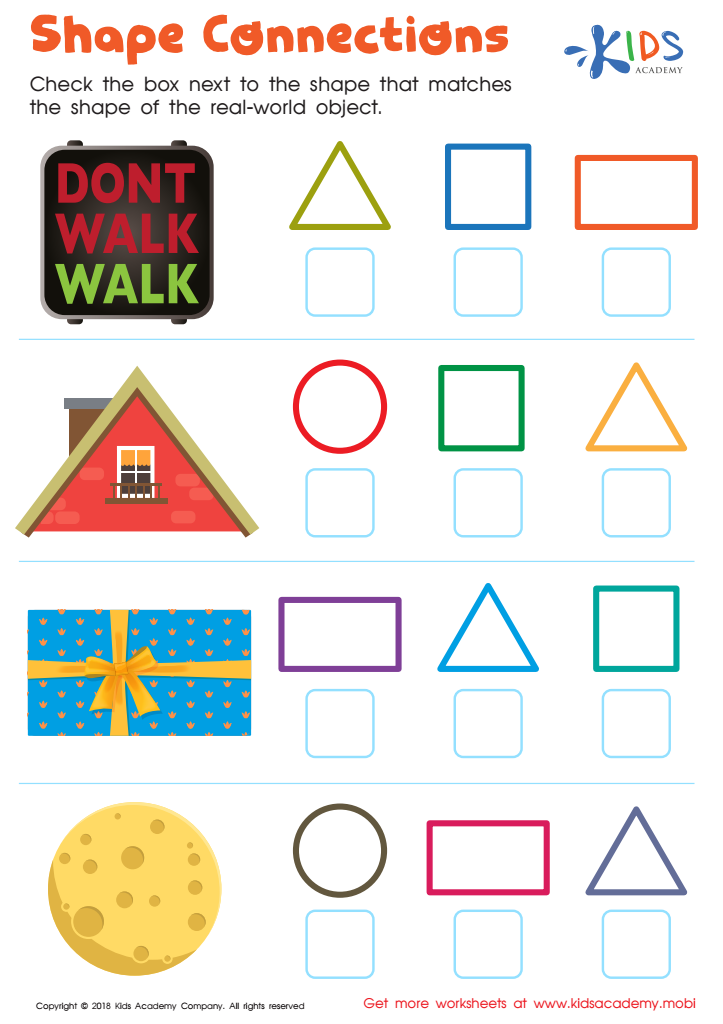

Shape Connections Worksheet
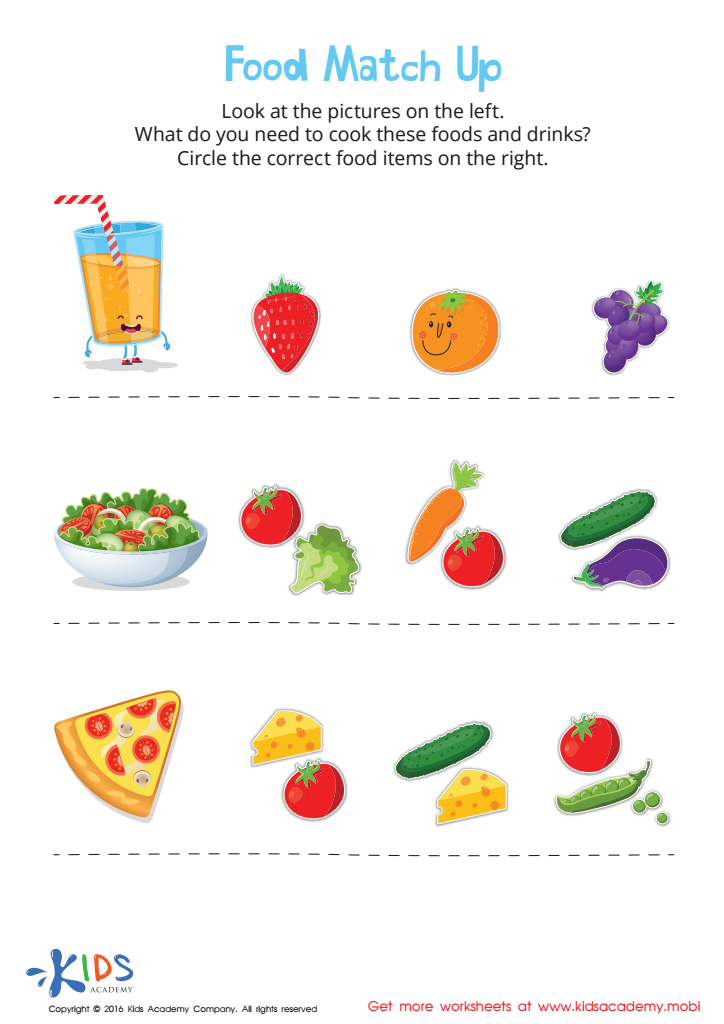

Food Match Up Worksheet
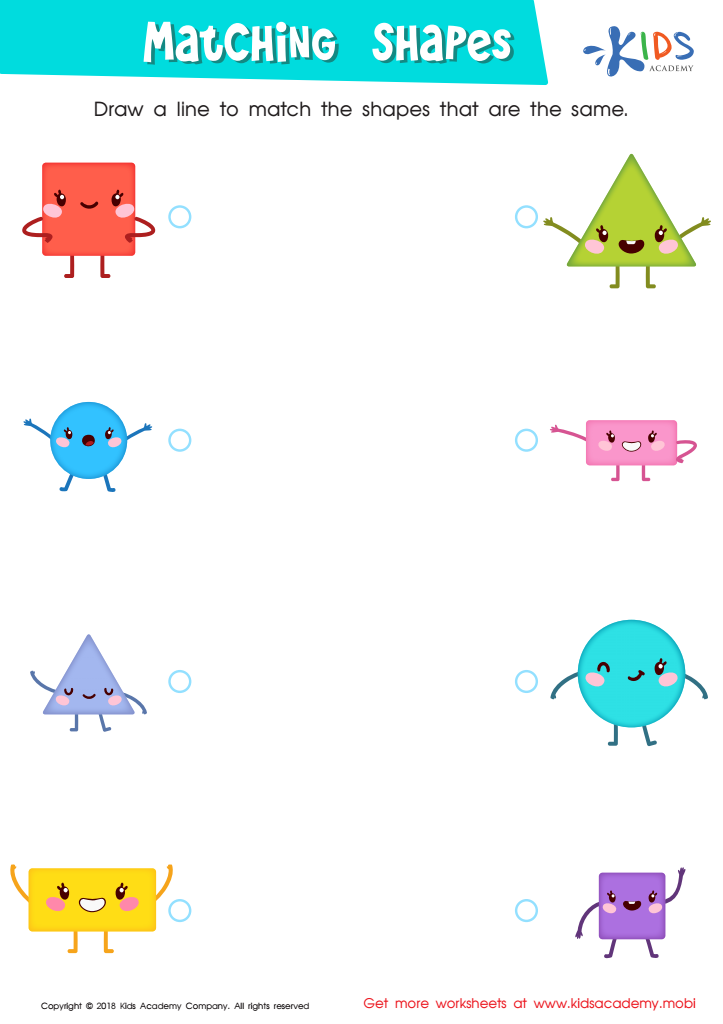

Matching Shapes Worksheet
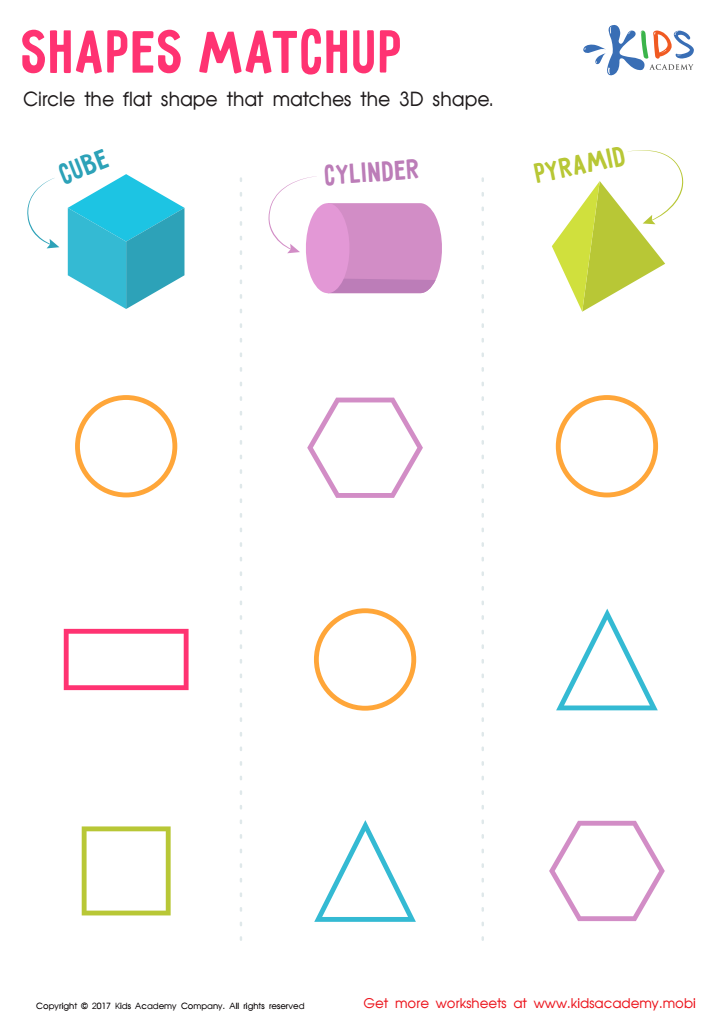

Shapes Matchup Worksheet


Shapes Worksheet
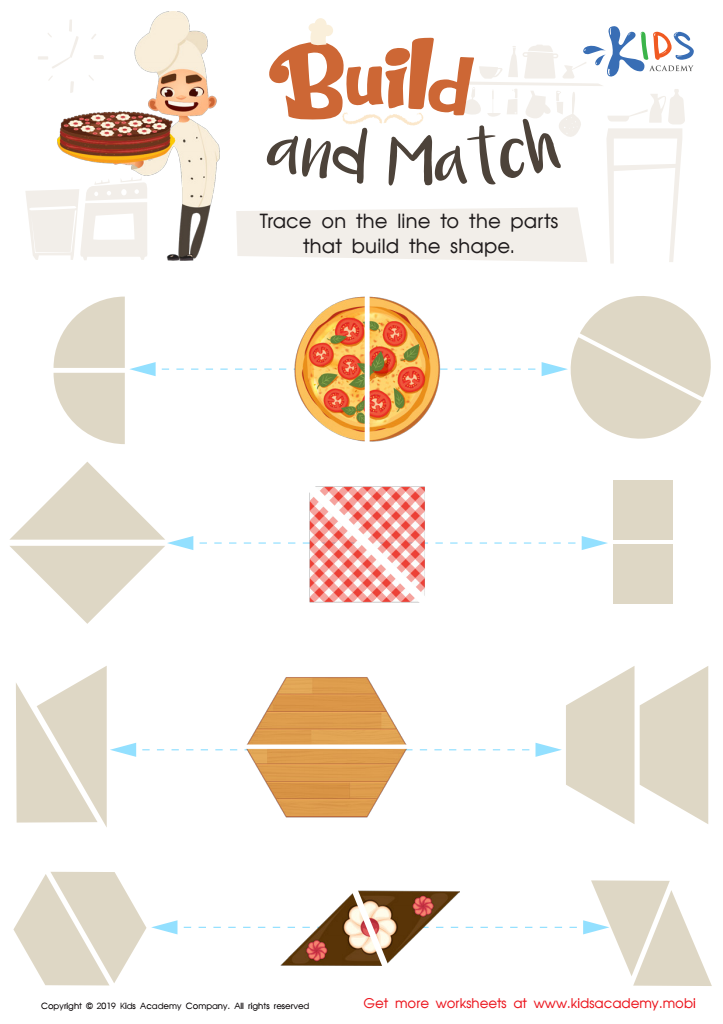

Build and Match Worksheet
Matching skills in geometry for children ages 3-8 lay the foundation for critical cognitive development, spatial awareness, and problem-solving abilities. Early exposure to geometry helps young minds grasp basic shapes, patterns, sizes, and spatial relationships, making these concepts more familiar and less intimidating as they advance in their education.
For parents and teachers, nurturling these skills is vital. It boosts a child's visual differentiation abilities and helps in understanding more complex ideas in mathematics and other subjects. By engaging in activities that involve sorting and matching shapes, children enhance their fine motor skills and their ability to recognize patterns and categorize information. These skills are essential for navigating not only academic challenges but real-world situations as well.
Additionally, early success in matching and identifying shapes often leads to increased confidence and a positive attitude toward learning. Activities like puzzle-solving and shape-sorting can contribute hugely to their cognitive and emotional development, making learning both fun and educational. For teachers, incorporating geometric matching games can foster a more interactive and dynamic classroom environment. For parents, practicing these skills at home provides an opportunity to bond with their children and actively participate in their educational journey. Essentially, it's a stepping stone towards future academic success and practical everyday use, making it an indispensable part of early education.
 Assign to My Students
Assign to My Students
















